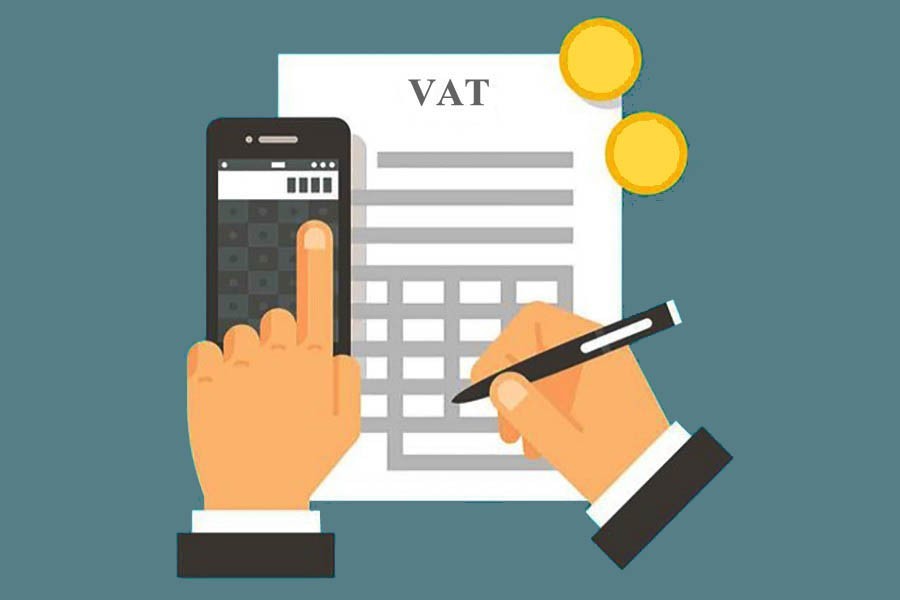Trade VAT: International best practices versus accommodation of local realities

Published :
Updated :

Value Added Tax (VAT) is a consumption tax. Generally, when goods and services are supplied or sold, VAT is applied. With regard to goods, there are three stages where VAT is applied when those are sold or delivered. These are: import stage, manufacturing stage and trading stage. On services, there is only one stage, i.e. service delivery stage.
Trading stage is wide-ranging compared to import and manufacturing stages. Administration of VAT at trading stage is a bit challenging since there are numerous points of sale. At this stage, there are very small, small, medium, big and very big players. So, uniform rule at this stage is not always practicable. It is more so in our country.
A standard trade VAT regime accommodates few principles. All small entities shall be exempted. There shall be a reduced rate on medium entities and on daily necessities and items consumed/used by the poor. And there shall be standard method i.e., input tax credit mechanism on other items and on the big and very big players. This segmentation needs to be precise and administration needs to be thorough.
In our immediate past VAT regime (under VAT Act, 1991), the trade VAT mechanism was multi-layered. In an economy like ours, that was most needed. There was standard VAT practice i.e., availing input tax credit and paying VAT at standard rate. However, a small portion of the big players availed this method. There was 5 per cent reduced trade VAT without input tax credit. Many big and medium players availed this method. For commercial importers, there was a method of non-payment of trade VAT when value addition at trading stage is equal to the presumptive value addition at import stage on which Advance Trade VAT (ATV) has been paid at import stage. Many commercial importers availed this method. There was a package VAT method for small shops. This method was widely abused in the absence of precise segmentation and thorough application. There was also a method of paying trade VAT on the basis of actual value addition on goods which were exempted at the previous purchasing stage.
So, we find that in our immediate past trade VAT regime, there were at least five methods in operation. However, the trading stage VAT was rather unorganised under previous VAT regime. There was widespread non-application and evasion. Of the total local VAT collected, only about 8 per cent came from trading stage, 4 per cent from import stage as ATV and the rest 4 per cent was collected as local trading stage VAT. This was very meagre compared to the prospects.
On July 13, when the Finance Bill, 2019 was placed in Parliament and the VAT Statutory Regulatory Orders (SROs) was published, we found a trade VAT regime incorporating only one method of the above i.e., 5 per cent reduced rate of VAT without input tax credit. Surprisingly, the standard method was not there. It is not known whether it was omitted deliberately or mistakenly. If deliberate, such policy emanated from the wildest of whims, and if mistaken, such mistake needs to be given serious thought for correction.
On June 30, when the Finance Act, 2019 was passed by Parliament and some relevant SROs were amended, we found a trade VAT regime incorporating two methods mentioned above i.e., 5 per cent reduced rate method without taking input tax credit and standard rate method with input tax credit. Other three methods referred to above were discarded.
I suggest incorporation of not only all those five methods in the new trade VAT regime but some more methods need to be designed to accommodate newer realities. Economic activities have got multifarious dimensions today. There are many economic activities at the trading stage which are not covered by one or the other five methods. For instance, sale of goods on commission basis. Manufacturer or trader delivers goods to commission agent who sells the goods, returns the full amount of money to the manufacturer/trader, then the latter pays commission to the agent. Sometimes, the commission agent pays proceeds to the owner of the goods after deducting agreed commission. In the absence of a VAT provision on this economic activity, diverse practices have developed at the field level.
An efficient trade VAT regime requires designing VAT provisions on all types of economic activities currently in practice. Business activities are not homogeneous in nature. We need many methods incorporating all field-level diverse realities so that traders can adopt any one of them that suits them best.
A debate is going for long on international best practices versus accommodation of local realities. First, we need to accept the need for accommodating local realities, and after that, we can think of aligning VAT regime with international best practices.
Dr. Md. Abdur Rouf currently works at a World Bank-financed VAT-related project as a Specialist. Opinion expressed in this article are his own.


 For all latest news, follow The Financial Express Google News channel.
For all latest news, follow The Financial Express Google News channel.